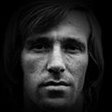Football ...
Basketball ...
Baseball ...
Other Sports ...
Futbol ...
🤫995🤫 ...
Gambling ...
Movies & TV ...
Music ...
Hobbies ...
Lulz ...
Food & Travel
...
Daily Texan ...
Business & Markets ...
Cloak Room ...
Help ...
For Sale ...
Board Discussion ...
Advertise...
Tailgate Donations
JMU HAS MORE PLAYOFF POINTS IN THEIR HISTORY THAN TEXAS AGRICULTURAL & MECHANICAL UNIVERSITY
×

Recommended Posts
Join the conversation
You can post now and register later. If you have an account, sign in now to post with your account.